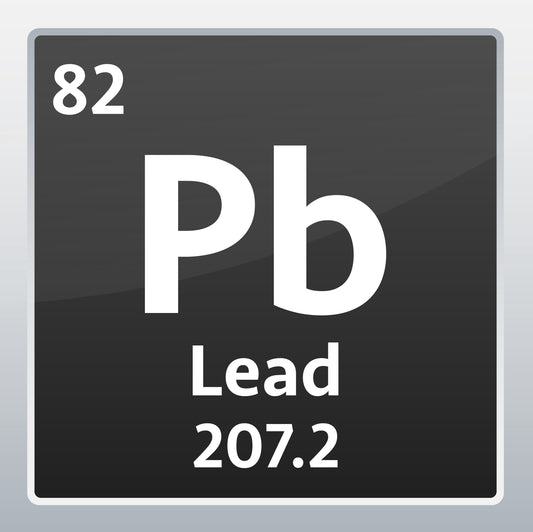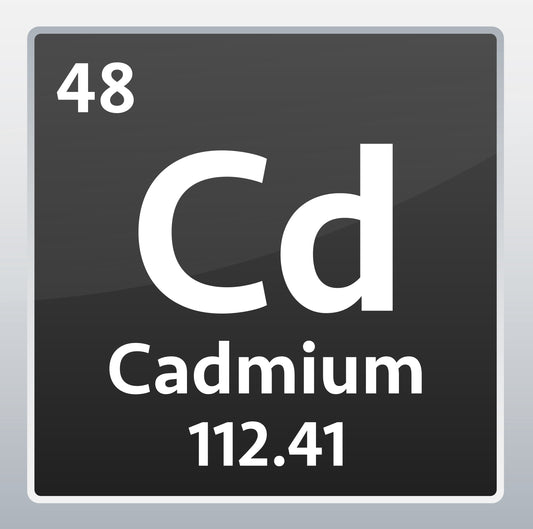YES, We Test for Heavy Metals
(approximately a 5 minute read)
First off, take a deep breath! We drink cacao daily, we share it with our families and friends, and we would never sell you anything unsafe.
We've been testing for a wide range of contaminants in our incoming cacao beans and in our outgoing products for many years as part of our standard food safety compliance. These tests results include lead and cadmium, which we'll discuss below.
Our lead test levels are n.d. "non-detectable". This means levels are so low even the best tests can't detect anything. We attribute our excellent results to sourcing in remote regions and careful post harvest controls, because lead is a post harvest contaminant.
Cadmium is present in many soils around the world. All of our test results are already more than 50% below the 2025 legal limit, which is when the US regulations get slightly stricter. But read on ... it's actually a lot safer than you'd think ... like 300 times safer.
What About That Consumer Reports Article That Said Most Chocolate Was Unsafe?
Well, they scared a lot of people. Anyone can run a cadmium panel for $40. But it takes a lot more savvy to interpret those results in a responsible way.
If you want to hear it not from us (since transparently we sell chocolate), here's an article with input by actual medical toxicologists talking about the substantial flaws in their sensationalist report.
They give you way more details than you proably need in that article, so if you want our more digestible take on it, read on!
The Biggest Mixup Was The Threshold for Safety
In our ideal world, the level of heavy metals in all of our foods would be ZERO. They are highly neurotoxic - nothing we want anywhere near our bodies.
The big mixup ... was actually about HOW YOU DEFINE ZERO.
The entire discussion revolves around numbers so small (less than one part per million), that they are hard to conceive of.
Written out, one ppm is 0.000001.
To flex your imagination, according to the American Chemistry Council, 1 ppm is the same as a credit card lying in the middle of a football field, or one step when walking 568 miles, or one minute out of two years time.
It's Impossible to Regulate To ZERO
If you write a law that says ZERO heavy metals are allowed in food, then you have a problem, because ALL FOODS would be disqualified.
These days, heavy metals and plastics are practically everywhere. If you run a good enough lab test, even if there are a lot of zeros, eventually you'll get a number that is non zero.
So a law that say ZERO heavy metals would then get a ton of lawsuits. Believe it or not, that actually happened in California with Prop 65.
A Fetus in a Pregnant Woman
If you can't regulate to zero, there needs to be a frame work for establishing a very very very small number that societally we choose is acceptable.
This number should ensure two things: that we can eat food without being worried, and that outlier foods that might be dangerous get flagged.
That non zero number needs to protect the most susceptible members of our society. In this case, that's a pregnant woman, because a fetus in development is incredibly vulnerable to heavy metals.
NOEL and MADL
There were actually extensive human lab studies done on this. NOEL is a lab test determined number that is the highest dietary dose level of a heavy metal at which there is no observable reproductive effect.
If you know what NOEL is, then you have the beginnings for establishing a non zero number that you can write a law for.
That's how MADL (the Maximum Allowable Dose Level) was created. Regulators in California decided that while NOEL is presumably safe, for regular exposure through our diets we want to be WAYYY below that. So in California Proposition 65, they created MADL and set it to be 1000 times below NOEL.
That's called a factor of safety of 1000.
Here's the Thing About Factors of Safety
When they work well, most people never have to think about them. Unless you are an engineer. That's how we make sure that bridges don't collapse even when there's a traffic jam with trucks on them, and that airplanes don't fall apart mid air during extreme turbulence.
Factors of safety are designed to be conservative, so that even in the most extreme situation, we don't have a failure.
BUT ... a factor of safety of 1000 for heavy metals was too conservative, because it disqualified practically all of our food system. The problem was, nobody checked what heavy metals levels were actually in food when they wrote Prop 65.
There were lawsuits! And Prop 65 was revised
Practically overnight, people started suing food manufacturers for being out of compliance with Prop 65. Have you ever seen a Prop 65 disclaimer on food sold in California? Manufacturers started putting those on there to protect themselves against lawsuits. But the optics was terrible. Kind of like the warning signs you'd see at a gas station. But you definitely weren't going to eat gasoline.
Effectively, in an effort to protect people, California lawmakers had inadvertently wrote a law that deemed all of our food unsafe. It was a complete disaster. After several years of chaos and litigation, Prop 65 was revised.
The revised Prop 65, which is now the standard for heavy metals safety, closely matches the equivalent law in place in the EU, typically known to be more conservative than the US when it comes to food safety. The new law got it right, striking the balance of protecting people from adverse impacts of heavy metal poisoning, and acknowledging that there are small amounts of heavy metals in practically all our food.
The safety factor they decided upon? 300. That's a really good safety factor. To put it into context, if a chocolate bar just barely passed the new Prop 65, a pregnant woman could eat 300 chocolate bars in a day and her fetus would still be fine.
CR made an embarrasing mistake
Remember that article that freaked everybody out? Consumer Reports used the now disused MADL as their threshold for safety, not the revised Prop 65. Basically, they were about five years behind the times.
If you go back and look at the CR test results, all the chocolate they tested is fine in terms of the new Prop 65.
It goes to show you can't believe everything you read on the internet, and that even reputable and well meaning organizations can get lost in the sea of numbers that are hard to interpret correctly unless you are an expert on the topic.
Keep Exploring
The World of Ora
-
How Purchasing Wet Cacao Improves Livelihoods
-
The Essential Science of Cacao Fermentation


